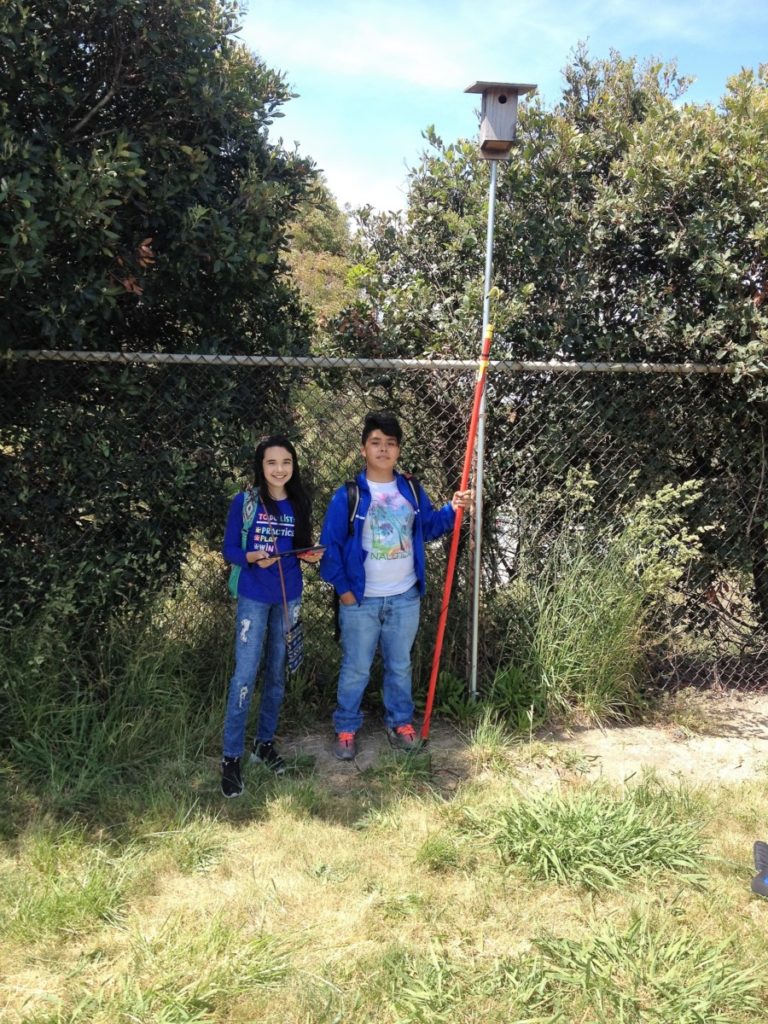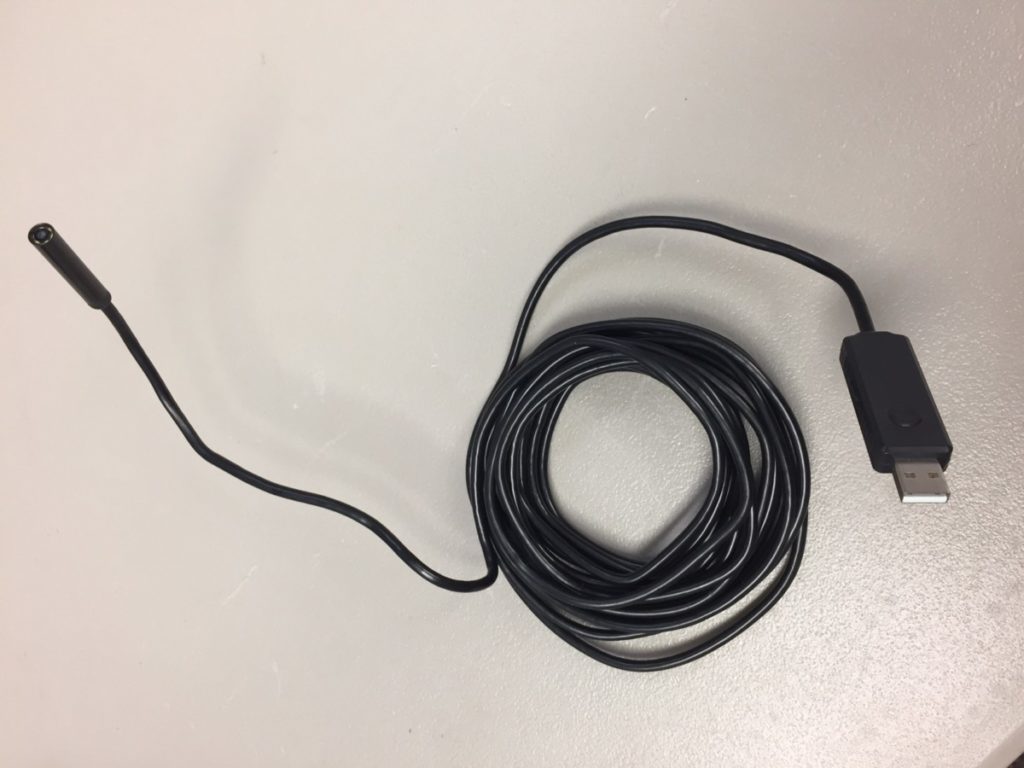Tiny nest box camera = big schoolyard excitement
By Ilana DeBare
You’re probably seen our amazingly intimate video feed from an Osprey nest on the Richmond shoreline — the first live Osprey nest cam in the Bay Area.
But the Osprey video feed wasn’t our only peek into avian family life this year.
Golden Gate Bird Alliance’s Eco-Education program used tiny digital cameras to give kids a close-up view of eggs and chicks inside schoolyard nest boxes this spring. They were thrilled!
“They were so excited,” said Anthony DeCicco, until recently the director of GGBA’s Eco-Education program, which provides hands-on nature education to low-income elementary schools. “They’d exclaim, ‘There’s the beak!’ ‘I can see beaks!’ “How many are there?’ ”
For the past three years, Eco-Ed students in three Richmond schools have been building nest boxes for Western Bluebirds in their schoolyards and for nearby parks. This spring, Anthony came up with the idea of using digital video to let kids see what was going on inside the boxes.
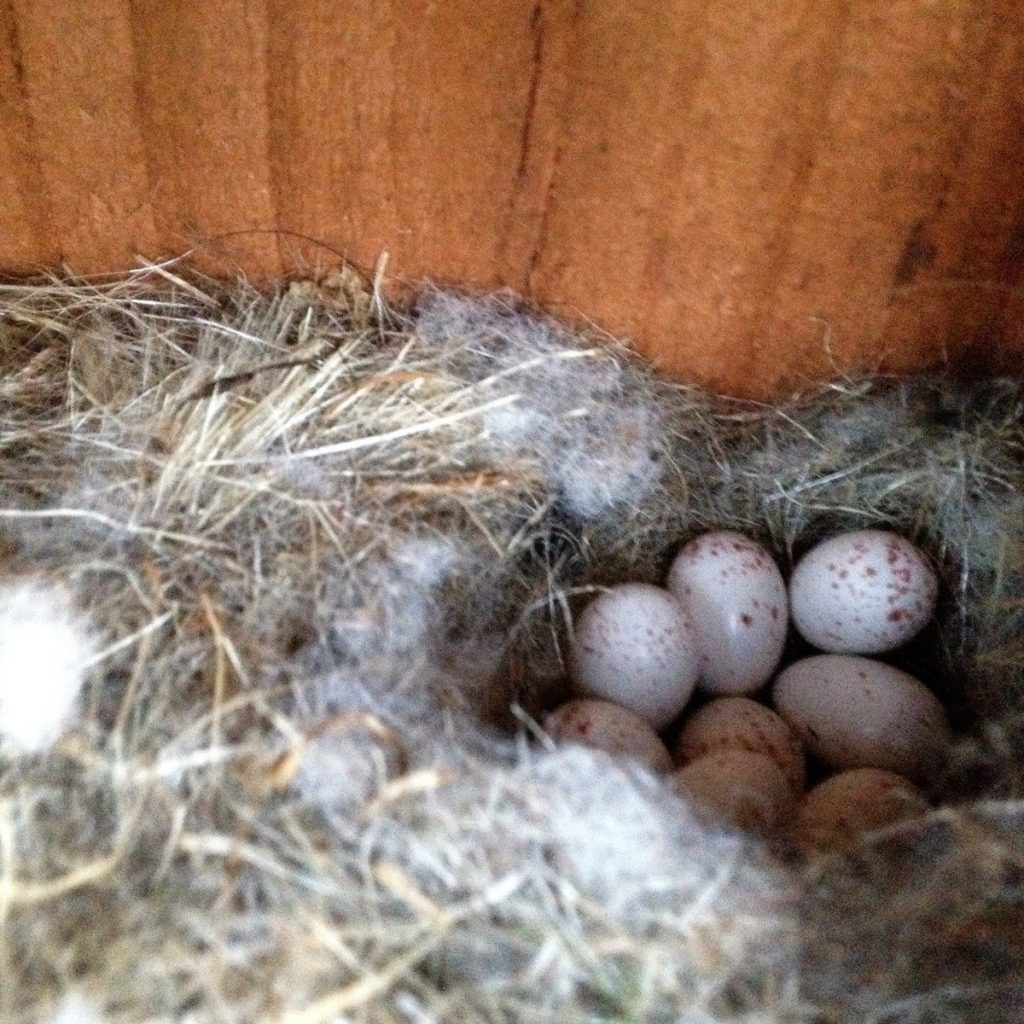
“I read about biologists using cameras with cavity-nesting parrots in some other part of the world and thought, ‘That’s pretty cool!’” he said. “They had a big telescoping pole and fished a digital camera into the nest. I figured we could do that. So I started doing Internet searches for cheap micro cameras.”
Eventually he found miniature cameras about the size of a crayon — endoscopes used by technicians for inspecting the inside of machinery — that cost just $25. They had LED lights, which would illuminate the dark interior of the box but would not be bright enough to disturb any resident chicks.


He mounted the camera onto a telescoping pole from a fruit picker, using a wire to make a hook shape that could be maneuvered into the nest box entrance hole. He plugged the camera into a digital tablet that would provide power and control the camera… and gave it a try.
It worked!
Students held the tablet and maneuvered the camera to get good views of adult birds sitting on eggs or chicks clamoring for food. Many of the kids were new to observing birds, but familiar with technology. “It was amazing to watch them: They were so swift and skilled at using the camera,” Anthony said.
Critically important was that the camera did not bother the birds.
“If a parent was on the eggs, it didn’t even notice what was happening,” he said. “If there were chicks, they were either not alarmed or they thought the camera was a parent coming to feed them and they would open their beaks. The only time a creature looked up and noticed the camera was when there were rats occupying one of the schoolyard boxes. I could see their eyeballs looking up at me. They could have been native wood rats or a field mouse.”

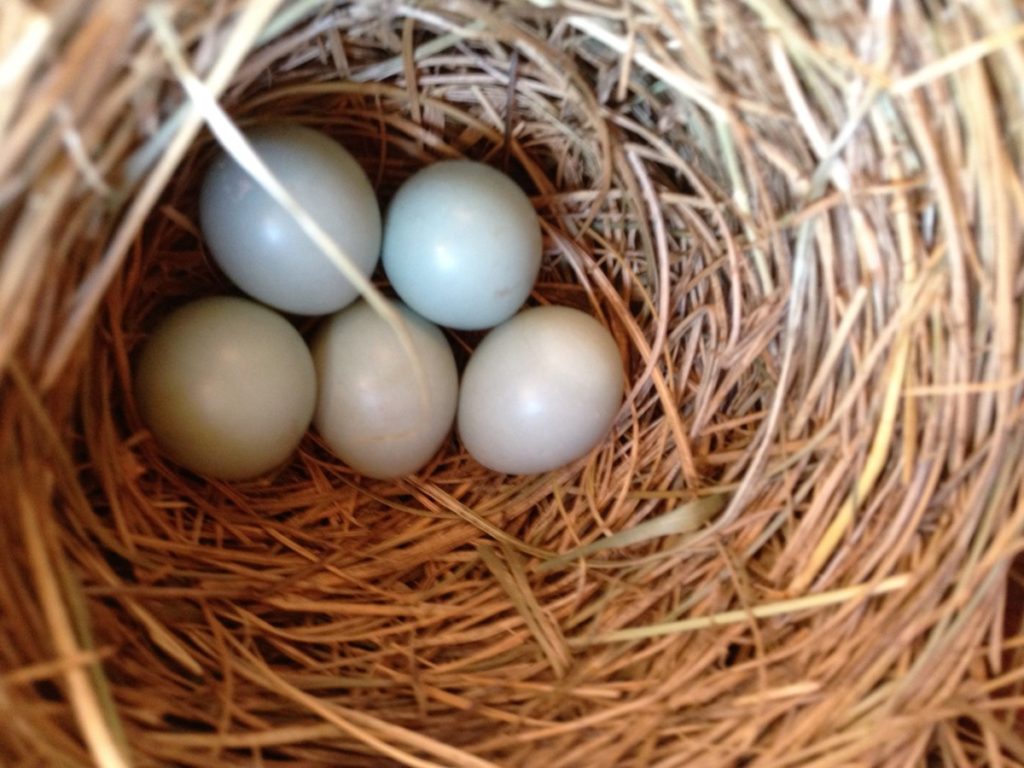
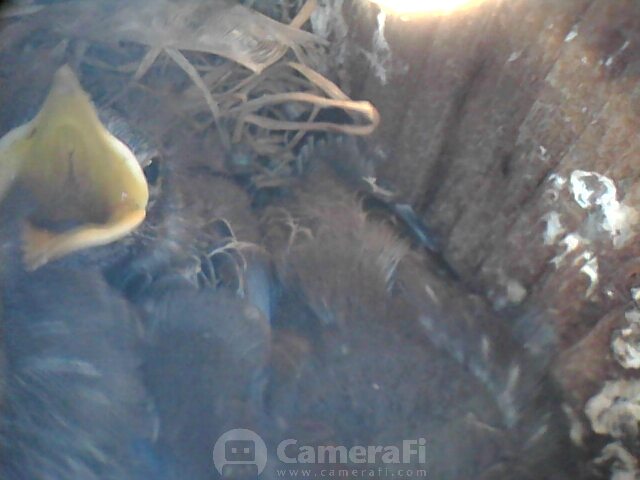
The camera not only allowed students to see and understand the nesting process, but it also made the job of monitoring the boxes easier. (The goal of monitoring the boxes was to see if nesting was progressing in a normal, healthy way or if there were problems like predatory flies, raccoons, or unwanted bird occupants like starlings.)
“The classic way is to bring a stepladder, climb up, and open the box,” Anthony said. “This was much less intrusive. We didn’t have to worry about bothering the chicks and having them prematurely fledge.”
In recent years, Golden Gate Bird Alliance has made a point of integrating STEM (science, technology, engineering, math) standards into its Eco-Ed curriculum. The nest box camera experience was a great illustration of how technology and nature study can compliment and enhance each other.
“Some simple, cheap technology combined with the excitement and wonder of nesting birds makes learning so much more fun,” Anthony said. “Whether it’s at school or at home, I encourage anyone to do this.”
Golden Gate Bird Alliance’s award-winning Eco-Education program provides hands-on nature education to students in Title I (low-income) elementary schools in Richmond, Oakland, and San Francisco. To find the kind of camera used in this project, do a web search for “inspection endoscope.”
